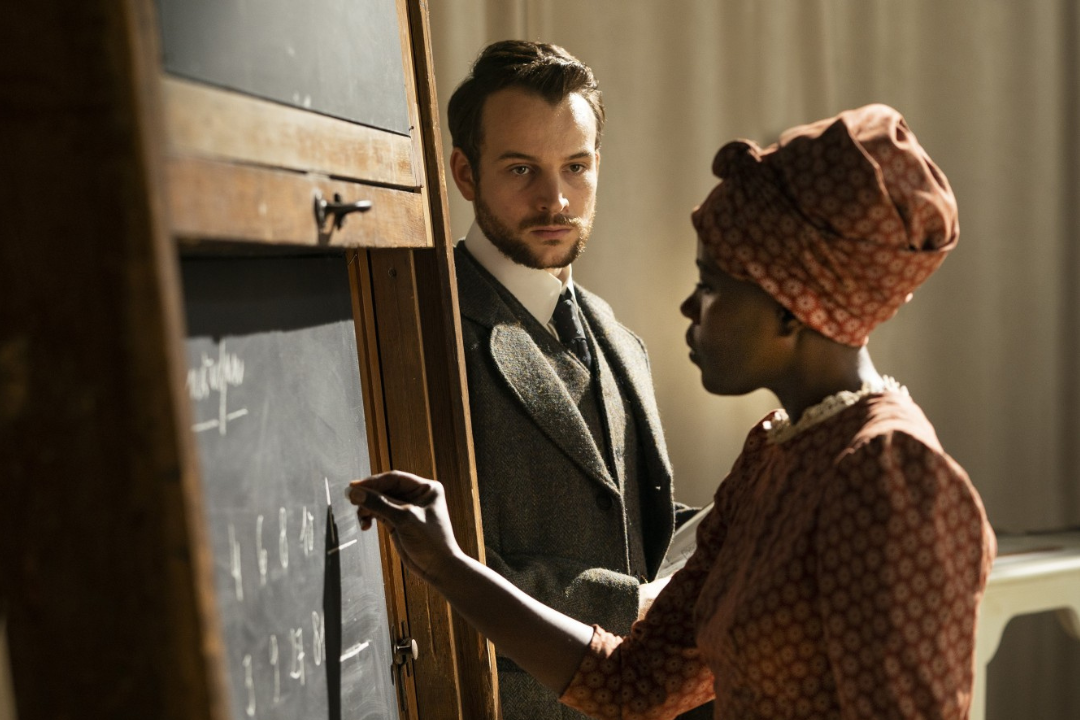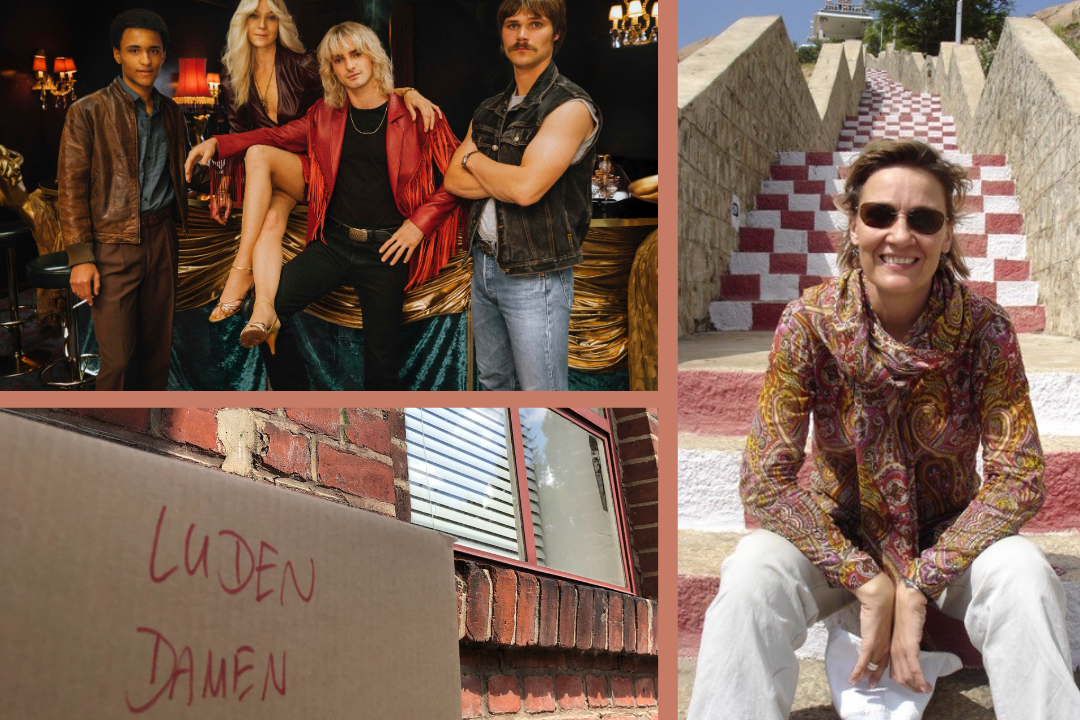Theaterkunst Talk
Maria Schicker
Maria Schicker and Theaterkunst! It’s true friendship. She’s been involved with our company for many years now, whether it be with glamorous projects such as the Ku’Damm series, stories about German reunification like “Balaton Residence” or crime dramas likes “Dark Woods”.
After several nominations for the “German Television Academy Award”, she finally won in 2021 with “Dark Woods”. Her work on the series also earned her nominations for the “Emmy Award” and the “Costume Designers Guild Award”, and her costumes have been recognized in numerous international exhibitions.
The project “Und dann steht einer auf und öffnet das Fenster” (“And then someone gets up and opens the window”) is a film about dying, about accompanying a person up to their death, and about neighbors who only mean well. We’ve read the novel by Susann Pásztor that the film is based on, and we constantly had to imagine Iris Berben as the protagonist.
© 2021 Bavaria Fiction / Nadja Klier
Theaterkunst
Maria Schicker
Your film project “Und dann steht einer auf und öffnet das Fenster” is very different from the Ku’Damm series, for example. What motivated you to accept the job to work on this very profound topic?
I’m always happy to get offers to work on socially relevant and meaningful themes. Scripts that have something to say, that inspire me, that make me think; in other words, scripts that simply tell a good story. I came to know and appreciate Bavaria Fiction through the project “Dark Woods”. Production manager Frank Lübke was on board again – I really appreciate his brand of teamwork; and Doris Zander is a producer who is always one step ahead, and who constantly motivates the people around her.
We follow Iris Berben as Karla during the final weeks of her life, up until her death. What was your approach to the costumes here?
In a similar way to Astrid Kirchherr, who photographed rock stars all her life, I wanted Karla’s character to reflect the full scope of her experiences in her clothing. As a photographer, she was always hanging around musicians, and she automatically dressed like one too. For me, the code words were Astrid Kirchherr, Patti Smith, Linda Ronstadt, Rosen Cash, Janis Joplin, Abbey Road, Sergeant Pepper, Udo Lindenberg, the Stones…
I stuffed her closet full of vintage pieces and a very visible past. The creases in the right place, the colors rather faded and the material well-worn and soft. Jewelry and accessories have been collected over the decades – delicate silver chains with pendants that tell stories of their own, a bracelet. All of that will accompany Karla to the end. Our eyes take in her clothing – it’s casual and authentic. And that’s how her very personal look came about: delicate yet powerful at the same time.
You’ve frequented Theaterkunst for many of your projects. What, in your eyes, is so special about a costume collection like this?
For me, Theaterkunst is a very valuable collection of costumes, and it’s a big deal to have it here in Berlin. Colleagues and purchasers have created such a wealth of costumes here. Theaterkunst offers six kilometers of clothes racks and ten million costumes! I can walk through aisle after aisle of racks and shelves, giving my imagination free reign as I discover countless pieces of clothing. There are so many surprises and sources of inspiration that come together here, like pieces of a puzzle, and that help me develop my characters.
You lived and worked in the U.S. for a long time. Is there a different take on the costume design business there, a greater appreciation perhaps?
Costume designers are recognized on the same level as designers. Working in close cooperation with production designers, lighting and camera operators, the director etc., they form a diverse and close-knit team. They take on a key role for the actors as well. Together, we develop their character as a team effort. The same thing happens here, but in the U.S. it goes a step further, more comparable to theater work, only with the working pace of film. It’s something I always notice in the reaction of the stage actors, and people are positively surprised when I devote sufficient time to character development. Ideally, that should always be the case.
And how does an American costume collection differ from a German or European collection?
By now, costumes in Germany get their own barcodes as well. That’s been standard practice in the U.S. for decades. And photos are taken of each piece of clothing. Even the smaller companies work that way. That makes it easier to identify a missing costume, and at the same time it makes keeping track of the finances easier.
Also, American costume collections are often bigger, with more room in the aisles for clothing racks and for preparing costumes. There is generally more manpower available, and returned items are quickly cycled back into the collection.
In terms of sustainability, do you prefer to use a collection at first, rather than buying new clothes?
My decision to make use of a costume collection is usually based on the character, but the question of sustainability is very important to me as well. After the filming is done, if it’s a contemporary project, I give a lot of the clothes to people in need, because letting it go to waste is just not an option.
What piece of advice would you give to young costume designers?
You’re only as good as your team, learn your craft, learn teamwork, help your colleagues when they have questions, don’t become your own boss too early, stay true to yourself, stay authentic and stay curious all your life.















